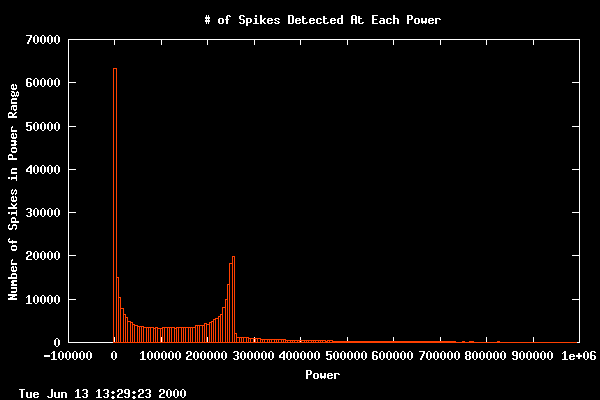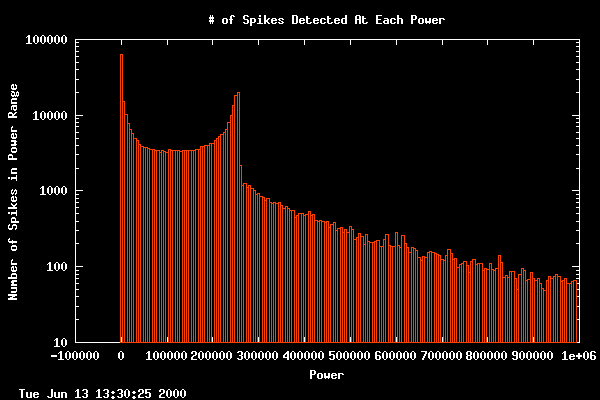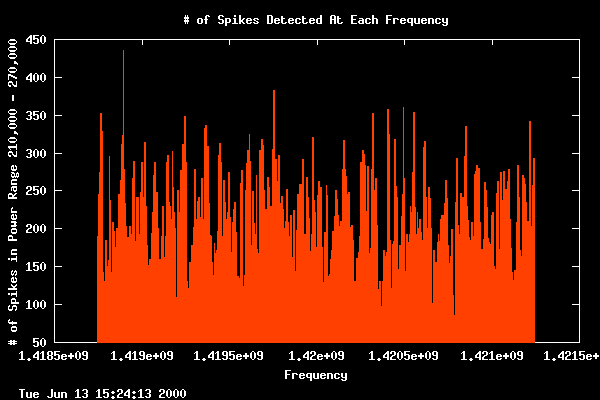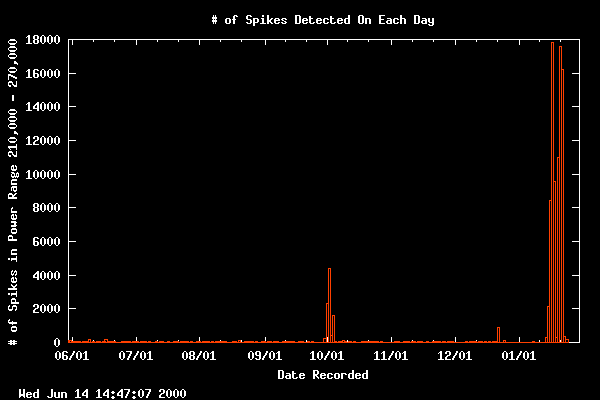Scientific Newsletter - June 19, 2000
|
Unexplainable Spikes? Eric Heien After having received so many results from the hundreds of thousands of enthusiastic users of SETI@home, we have begun analyzing these results for signs of an extraterrestrial signal. Many of these analyses include simple calibration tests to ensure that the data are valid and makes sense scientifically. One of these calibration analyses, however, yielded a rather interesting result. We took a sample of 50 million spikes received from users, and plotted these, displaying the number of spikes at each power. The graphs displaying the results of this plot are below, plotted both on a standard scale and a log scale (in which the y-axis values grow increasing larger).
Both graphs display an odd hornlike spike at around power 240,000, implying an excess of radio frequency interference around that power. This goes against what we expect, since in theory there would be fewer spikes at greater powers. The horn could not be explained very well by radio frequency interference, however, since it seems to have a great deal of spikes at slightly lower powers, but virtually none past a cutoff power of roughly 265,000. In an attempt to determine the nature of these spikes, we investigated which frequencies contributed most to the spikes within the "horn".
Again, there seemed to be no explanation for the strange spike "horn" we had found. A standard emitter of radio frequency interference, such as a radar or satellite passing overhead, would tend to emit the high powered transmissions over a very small frequency range. As shown by the graph above, there was no significant correlation between the spike horn and any particular frequency, which ruled out much of the standard radio frequency interference. Although it is possible that a spread-spectrum satellite emitting over a wide frequency range could cause interference like this, a single satellite would not be over Arecibo long enough to result in as many spikes as were found.
Finally, a display of the days the spikes originated from yielded the answer. The vast majority of the spikes were coming from January 17th-21st, 2000. It turns out that on these days, the Arecibo telescope receiver was temporarily broken. |

©2024 University of California
SETI@home and Astropulse are funded by grants from the National Science Foundation, NASA, and donations from SETI@home volunteers. AstroPulse is funded in part by the NSF through grant AST-0307956.



